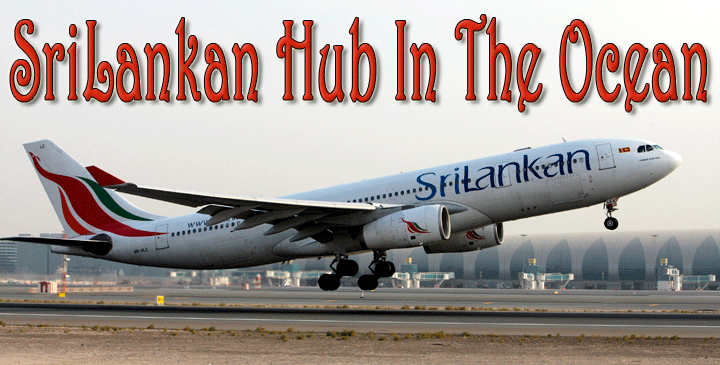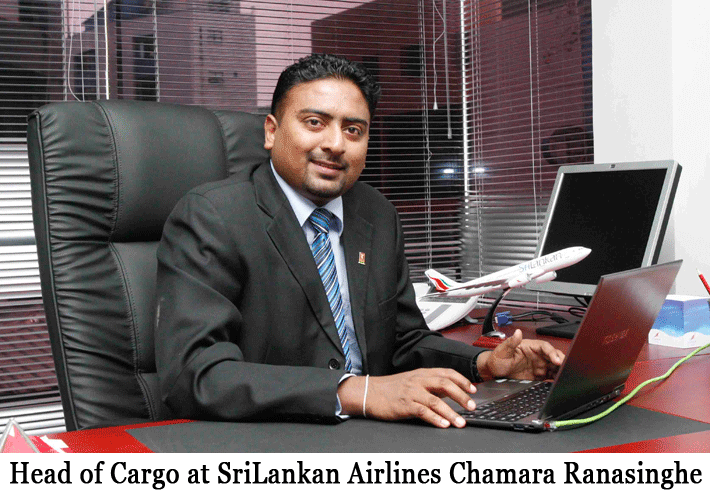
Apart from the leading Middle East cargo giants, not many carriers have been able to post the sort of freight growth rates SriLankan Airlines has managed in recent years. Mr. Chamara Ranasinghe, Head of Cargo, told FlyingTypers that despite the competitive pressures felt both from rival airlines and alternative shipment modes, UL managed to increase its volumes at an average of 5 percent year on year over the last five years.
From its “Hub In The Ocean,” Columbo, and elsewhere, SriLankan Cargo uplifted 101,878 tons in FY2014-15, an 8 percent increase over the previous year. UL’s cargo operations are now a major part of the airline’s financial health, contributing approximately 12 percent of the airline’s total network revenue annually and providing a net contribution of USD$50m to the SriLankan Airlines Group in FY2014-15.
In FY2014-15, growth was evident mainly on the Indian sector, into Middle East, and Ex China. “With the passenger and cargo demand to and from China, we will be increasing frequency into CAN with an additional 3 flights a week from November 2015,” said Ranasinghe.
He also said there had been an increase more recently in exports originating in Colombo and destined for European sectors and the Middle East. “Bangalore, Chennai, and Mumbai are major markets in India as well,” he said. “Main export commodities ex-CMB are the fruits and vegetables movements—perishables—into the Middle East, and chilled fish and garments into Europe. With the introduction of the A330-300 aircrafts, SriLankan has gradually overcome the capacity constraints into CMB.”
SriLankan Cargo primarily utilizes the bellyhold capacity available through UL’s network, which spans 99 destinations in 47 countries. The UL fleet currently totals 20 Airbus aircraft—one A340, seven A330-200s, four A330-300s, six A320s, and two A321—with one additional A330-300 set to join the fleet by mid-November, the latter addition part of an ongoing restructuring process.
“With the ongoing re-fleeting process, the A340s will be completely replaced with the new A330-300 aircrafts and plans are set for the inclusion of A350 aircraft,” said Ranasinghe. “In addition to this, SriLankan operates a MD82 freighter on a lease basis with an average payload of 19,000 kgs per flight. The freighter operations are mainly to India, largely to supplement the A320 line operation.
“SriLankan cargo also recently commenced twice-weekly freighter operations to DAC via LHE.”
UL has also been widening its network by signing more Special Prorate Agreements with partner airlines in Africa, Israel, Vietnam, and Australia. Ranasinghe said UL was now looking for options to team up with major airlines on a joint venture commercial operation basis to carry cargo to Europe and beyond.
However, Ranasinghe warned that despite recent heady growth in freight volumes, the current “alarming” trend of poor growth in FTKs in relation to available capacity in leading markets had prompted SriLankan to take “a volume-based approach in order to maximize belly capacity and freighter operations, which have been led through a significant compromise from preferred yields.”
He added: “The recent IATA reports published indicated that airlines will tend to see yield weaknesses primarily with the lower oil prices and stronger capacity growth. IATA further went on to state that while the air freight industry will grow by 5.5 percent, yields are set to fall by 7 percent due to capacity increases of 6.2 percent, a rise of 0.8 percent in comparison to last year.
“As a result, SriLankan, too, has faced a decline in yields in this financial year in several key markets, including the base station Colombo.”
Ranasinghe was, however, optimistic that there would be an upsurge in future demand into markets such as the Middle East and Maldives, which were already seeing increasing demand for perishables. “Further, developing markets such as Chennai, Bangalore, and Dhaka are considered key markets for the future,” he added.
SkyKing |



